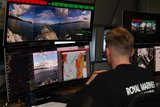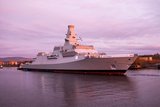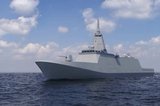US invokes UNCLOS in Spratly patrol
After numerous recent hints the US Navy (USN) finally conducted a much-anticipated freedom-of-navigation (FON) patrol in the Spratly Islands in the South China Sea on 27 October.
USS Lassen, believed accompanied by patrol aircraft, sailed within 12 nautical miles of the reclaimed Subi Reef, where a runway appears to be under construction. The USN destroyer was trailed by two People’s Liberation Army Navy (PLAN) vessels.
The USN pointed out the action was non-aggressive and designed to underscore the right to routine navigation. Close ally, Australia, immediately issued a supporting statement: ‘It is important to recognise that all states
Already have an account? Log in
Want to keep reading this article?
More from Naval Warfare
-
![NATO tests use of “undetectable, jam-proof” laser communication in maritime scenarios]()
NATO tests use of “undetectable, jam-proof” laser communication in maritime scenarios
As part of its effort to better prepare its capabilities for operations in contested and congested scenarios, NATO evaluated a Lithuanian ship-to-ship terminal designed to not be susceptible to enemy interference.
-
![US Navy advances with the Harpoon Service Life Extension Programme]()
US Navy advances with the Harpoon Service Life Extension Programme
The US Navy plans to improve Harpoon’s anti-ship and land attack capabilities by equipping the missiles with sensors and technologies required for succeeding in future battlespace.
-
![Mitsubishi eyes future with Australia’s Mogami selection]()
Mitsubishi eyes future with Australia’s Mogami selection
With Australia’s selection of the Mogami-class for Project Sea 3000, Mitsubishi is investigating local production in the next decade as potential export opportunities emerge.
-
![Thales’ new Sonar 76Nano could equip UK Royal Navy on anti-submarine warfare missions]()
Thales’ new Sonar 76Nano could equip UK Royal Navy on anti-submarine warfare missions
The new sonar is designed to equip uncrewed underwater vessels, with the potential to be used by the Royal Navy for its Atlantic Bastion and Atlantic Net missions.
-
![Hanwha wins Australian government approval to increase its stake in Austal]()
Hanwha wins Australian government approval to increase its stake in Austal
The contract would mean the two shipbuilders can collaborate strategically and enhance shipbuilding capabilities in Western Australia.
























